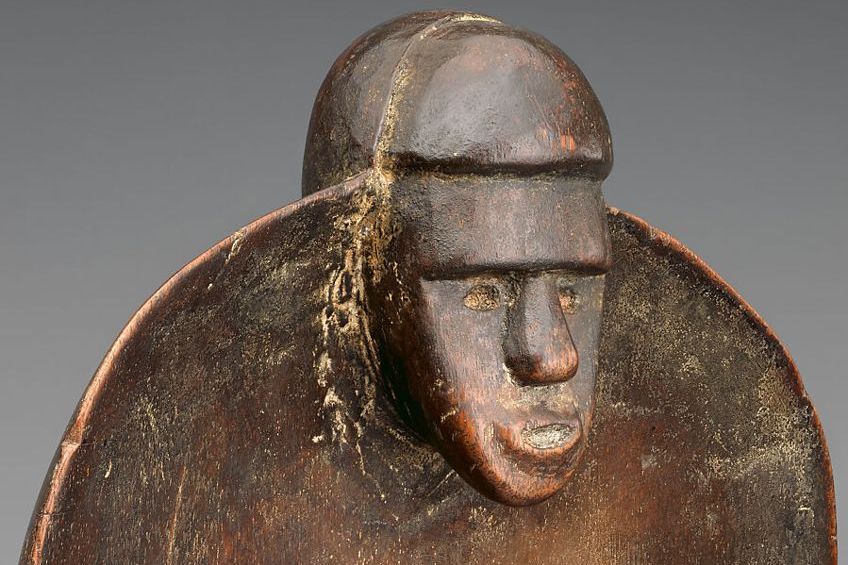Oceanic Art – Exploring Traditional Polynesian Culture
What is Oceanic art, and what are the characteristics of Oceanic art? From monumental architecture to ceremonial sculpture and vibrant cave art, Oceanic art boasts a rich variety of intriguing art forms that showcase the diverse cultures that emerged in the Pacific Islands and various coastal archipelagoes. In this article, we will introduce you to all you need to know about the major art forms and styles of Oceanic art, including a few fascinating artworks that provide insight into early Oceanic civilizations. Keep reading for more about this spectacular form of art!
An Introduction to Oceanic Art
What is Oceanic art? Oceanic art refers to art that is produced by cultures originating from the Pacific Islands and includes other regions such as Easter Island, Australia, and Hawaii. The term is a broad categorization that encompasses art produced by two different groups of people, whose paths crossed and mixed across the remotest islands. Oceanic art includes art from four distinct regions: Australia, Micronesia, Polynesia, and Melanesia. Art from these different populations is significant since it reflects the cultures of the Australo-Melanesians, who were the first people to migrate into the region. The Neolithic Lapita culture is another famous culture that mixed with the Australo-Melanesians, and whose descendants populated Polynesia, Micronesia, and Island Melanesia. It is also important to understand that Oceanic art is often understood in the context of before and after colonizers settled in Oceania since the introduction of European art influenced Oceanic art.
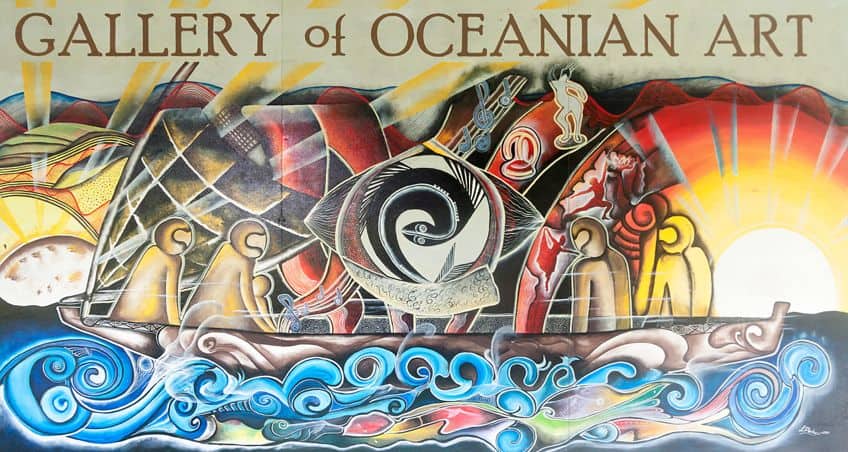
Oceanic Art Forms
Just as there are many art forms in the West, there are many native art forms in Oceania. These include basketry, painting, sculpture, architecture, rock art, textile art, mask-making, pottery, and decoration. For many Oceanic cultures, visual art and applied arts have always been connected and culminated in elaborately decorated meeting houses and storehouses.
Each artistic style varies according to the region in which the art is produced with concurrent themes such as the supernatural world and fertility running across most cultures.
Objects such as masks are also an Oceanic art form that was used primarily in ceremonies and rituals. Art forms such as painting, tattooing, stone carving, wood carving, and textile works were common art forms in Oceanic regions. Today, Oceanic art continues to integrate past styles and art forms into new Contemporary works that reflect individual interactions with the different cultures and Oceania’s complex geographic history.
Methods and Tools in Oceanic Art
What are the characteristics of Oceanic art? To better understand the characteristics of Oceanic art, one needs to consider the materials and methods that define it. Before the influence of European art styles and materials, Oceanic artists continued to use Neolithic technologies and tools to create art. It was only in New Guinea where people from Teluk Cenderawasih only imported small amounts of metal to forge objects as part of a cult. Such tools were also traded in small quantities and did not impact the working conditions of people on the Island.
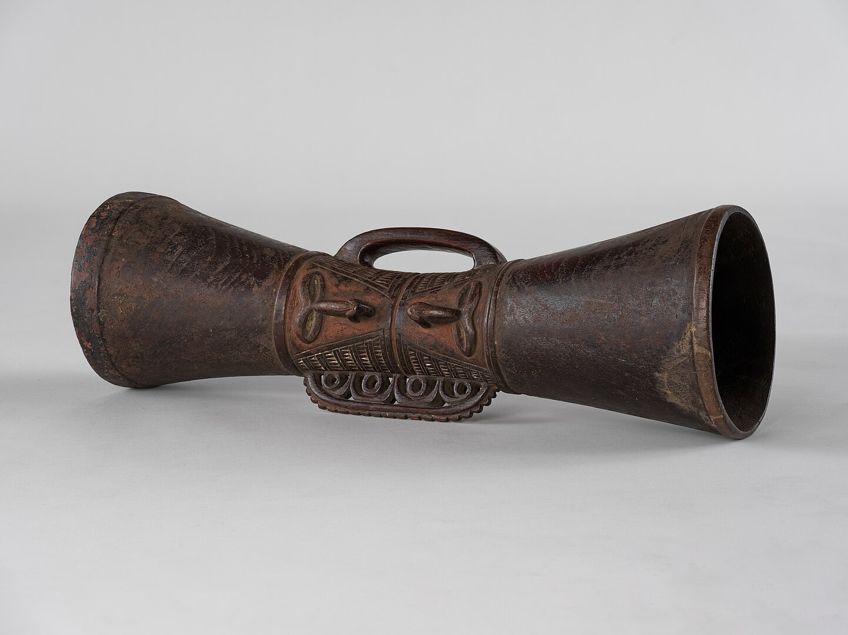
Throughout Polynesia, Micronesia, and Melanesia, basic tools such as the stone blade adapted into a hafted blade or ax were used as the dominant tool. In other parts of Oceania, tridacna shells were also used to replace areas where there was a shortage of stone materials. Materials such as obsidian were later discovered and adapted into blades for use as tools and weapons. Materials such as bivalve shells and bamboo were also used to create tools with sharp edges.
Art forms such as engraving were executed with boar tusks, as well as rodent and shark teeth. Bones from animals were incredibly useful to Oceanic cultures and served as needles, gouges, and awls. Such tools were popularly used in woodwork practices. Another beautiful medium was jade, which was processed by Oceanic artists by grinding it with abrasives. Elements of turtle shells were also used in Oceanic art, as well as time-consuming mediums like wood and stone, which were worked with packing, hammering, and polishing.
In sculpture, clay was the primary medium that was also incorporated into musical instruments and pottery throughout New Guinea and Melanesia.
Pottery production was almost entirely understood as a female practice, with exceptions in a few parts of the Solomon Islands and New Guinea. The main technique involved spiral coiling the clay, which was executed by women. On the other hand, men have designated the art of painting and décor. Painting was viewed as a way to animate three-dimensional works in a literal sense and was used in religious objects to amplify the object’s magical qualities.
Pigments used in Oceanic artworks included ochre and vegetable pigments mixed with sap or water. Paint brushes were also forged with frayed sticks, wood, and feathers. Oceanic canvases included rocks, tapas, and barks. Melanesian paintings were produced on sago-palm spathes and tapa cloths. Tapa was manufactured by women in Polynesia, who also decorated the fabrics with abstract motifs and dyes made from vegetables. Techniques such as stenciling, stamping, and printing were employed in tapa production processes. One can observe just how imaginative Oceanic cultures were in adapting materials from the natural environment as creative additions to art. Below, we will further explore the different regional art practices and styles of Oceania.
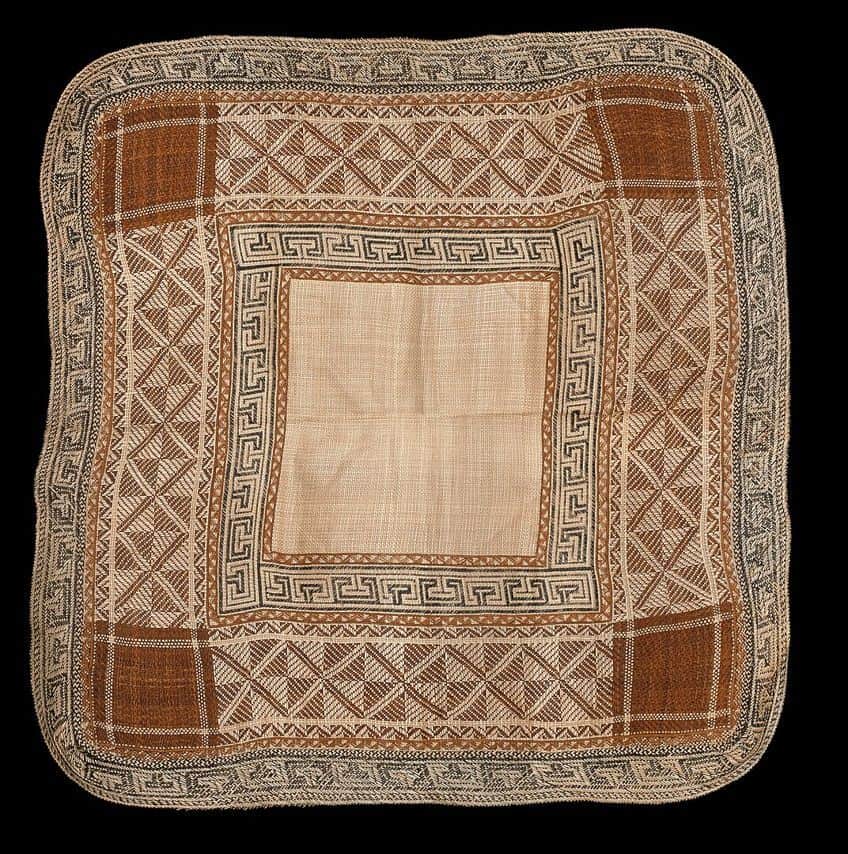
Prehistoric Oceanic Art
Prehistoric art from Oceania is often associated with the Australian Aborigines civilization, whose art practices have remained consistent for centuries. Important sites to explore Aboriginal art are spread across three sites in Australia and understood in three different periods. These periods include the Pre-Estuarine period, dating to around 40,000 BCE, the Estuarine period (c. 6000 BCE), and the Freshwater period (c. 500 CE – present). The earliest artistic period is the Pre-Estuarine era, which is defined by the use of red ochre in art, however, by 6000 BCE, art became increasingly complex, which was then characterized as the Estuarine period. Prehistoric rock paintings of the Aboriginal people serve multiple functions, the most common being their magical qualities.
Rock painting was also used as a medium of entertainment with the most exquisite artworks housed at the Ubirr site, which features rock paintings that span thousands of years.
Other Oceanic regions such as New Guinea saw the birth of prominent sculpture through stone-carved figurines that were discovered throughout the island in high-lying areas. One of the oldest figurines dated to around 1500 BCE. Sculptures from New Guinea were divided into three distinct categories, including freestanding statues, mortars, and pestles. The pestle sculptures often included images of animal heads at the tops with the mortars displaying similar motifs and geometric patterns. Freestanding sculptures explore the human and animal forms, which were believed to hold ritual functions.
The Lapita culture is another Oceanic civilization that thrived around 1500 BCE and is believed to be the ancestors of the current people of Island Melanesia and Polynesia. The Lapita civilization emerged as the second set of Oceanic settlers and derived their name from a site called Lapita in New Caledonia. Originally, the Lapita people came from Southeast Asia and were recognized as the earliest civilization in Oceania to develop sculpture and ceramic art. This also included anthropomorphic images and elaborate geometric forms in their decorative works. A few designs from their culture have also been adapted into Polynesian tattoo designs and bark cloths. These designs were created using a comb-shaped tool, which was fired and stamped onto wet clay. The process would be repeated and layered until the desired pattern was created. Such ceramics were often used to prepare, store, and serve food.
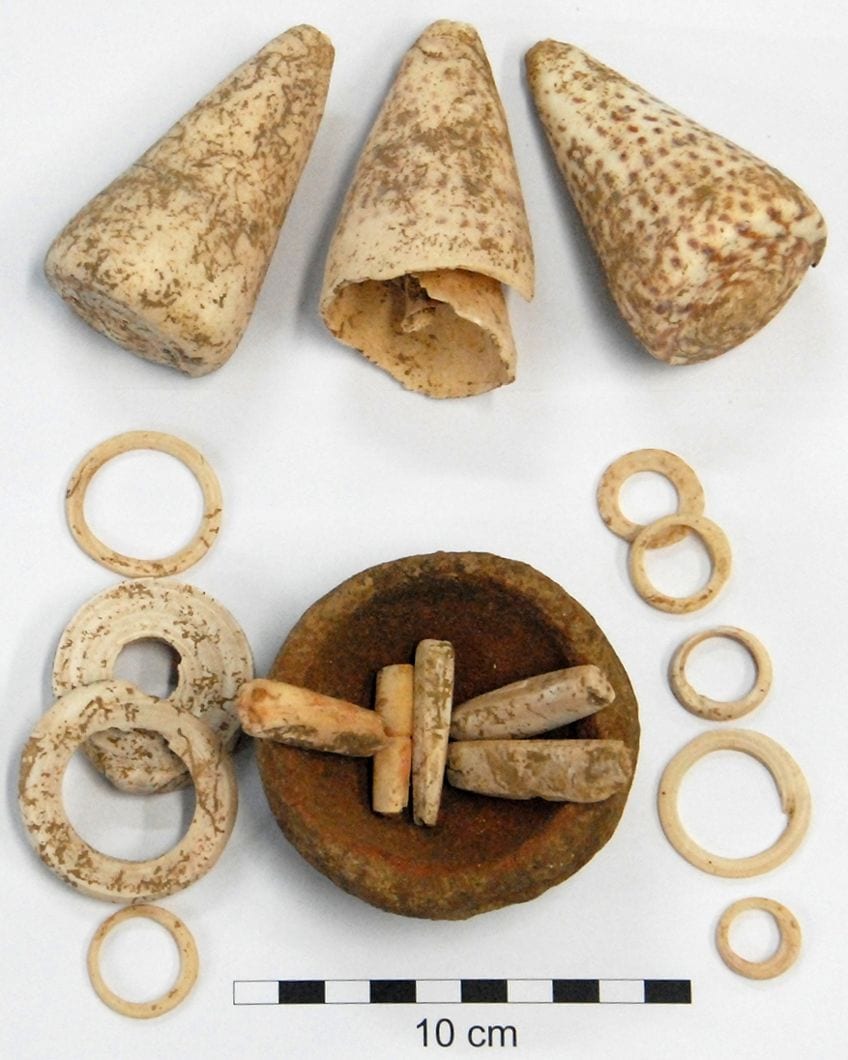
Micronesian Art
Oceania also includes the Micronesian region, which is composed of Oceanic cultures such as the Lapita culture, early Austronesian settlers, and people from the northern islands of Melanesia. Around 1200 CE, a megalithic floating city called Nan Madol commenced its construction and remained in the process of construction until 1600, when European settlers began to arrive. The city is recognized as one of the most important constructions of Oceania, however, it had undergone a significant decline around 1800 and was completely abandoned by the 1820s, along with the Saudeleur Dynasty.
Oceania was then divided up in the 19th century by the different colonial powers but despite the division, art continued to thrive in Oceania.
One of the most dominant art forms during the 19th century was wood carving, which was performed by men and resulted in many ornamentally decorated ceremonial houses, canoe ornaments, vessels, stylized bowls, and sculptures. Art was also divided into gender roles, and women were designated the art of textiles and jewelry making. One of the characteristics of Micronesian art is its streamlined and simple aesthetic, which is also tied to its function.
Micronesian art is often defined by its high quality and use of few natural materials, which were utilized expertly. Due to the influence of Japanese and Western powers in the 20th century, Micronesian art saw a decline in its cultural integrity. Sculpture had significantly declined during the 20th century, however, other art forms, including weaving and architecture, continued to be practiced. By the second half of the 20th century, Micronesia gained independence from colonial powers, which saw a revival of traditional arts in the region and the development of Contemporary art towards the end of the century.
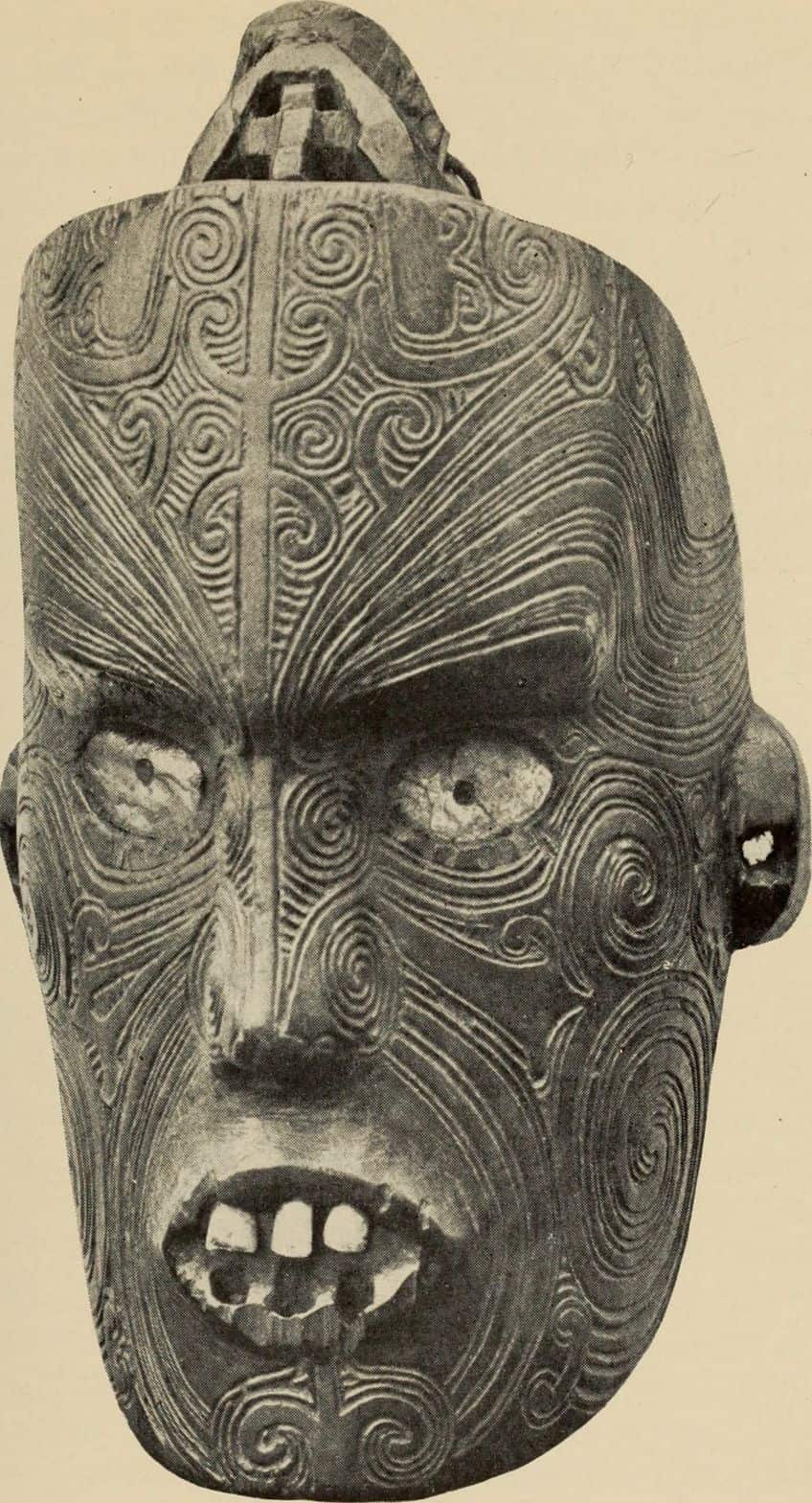
Polynesian Art
What makes Polynesian art stand out in Oceania was its designation of the role of the artist as an important player in promoting religious rituals and prayers. In regions such as Hawaii, many Polynesian carvers were distinguished by their special priestly class, while in New Zealand, the Maori civilization viewed carving as a sacred activity. Accounts surrounding the origins of carving itself were also linked to beliefs of the Gods and their relationship to ancestors.
As a chief, carving was regarded as one of eight proverbial attainments by the Maori people. The art of carving was so highly regarded that there were also accounts of people who were captured for their talents and served as both slaves and celebrated artists at the same time. Despite the circumstances of being enslaved for being an excellent carver, it was the duty of the carver’s employer to keep the artist well-fed and looked after.
Upon completion of the artwork, the artist would receive a fair payment that was initially agreed upon, which was also shared with those who praised him.
The main rewards for producing such intricate carvings were praise and esteem. In Polynesia, it was recognized as “mana”, which reflected the moral authority of the artist and personal prestige. However, more credit would have been granted to the person who commissioned the work in the first place, who was considered the true author of the artwork.
The Kauri Point Swamp in the North Island of New Zealand produced a series of combs, which were discovered in a sacred deposit and shed light on the development of geometric designs between the 16th and 18th centuries. In Maori art, cloaks were also treated with the same artistic designs and geometric patterns on their borders, however, this soon evolved into an emphasis on curvilinear patterns and surface decorations. Jade sourced from the South Island mountains and stream beds was also used to create a wide range of ornaments, including weapons and blades.
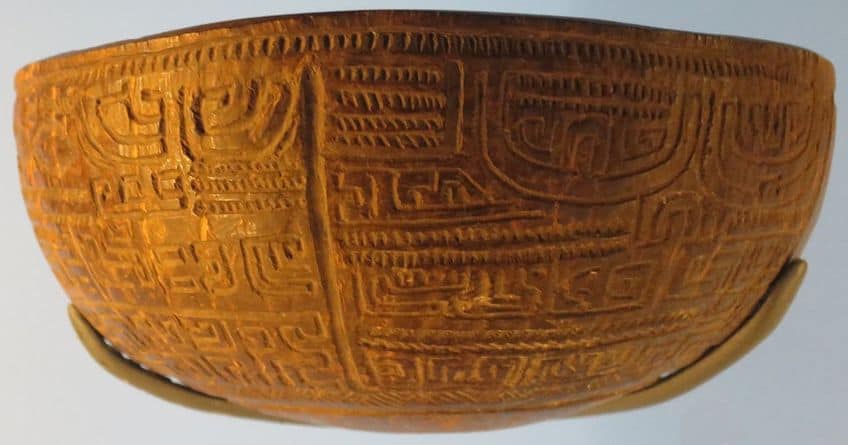
Similar to Micronesian art, Polynesian artifacts also have its roots in Lapita cultural practices. The Lapita culture was also found in parts of the Western Pacific and extended as far as Samoa and Tonga. Among the most celebrated Polynesian artworks are the statues of Rapa Nui called the Moai statues. Prehistoric Polynesian cultures also saw the use of two major themes. These included ceremonial grounds and personal ornaments. Ceremonial grounds were considered places of worship and manifested in the form of enclosures, which were raised walls with a platform across one end.
Since prehistory, Polynesian cultures shared a few common elements, including pendants made from whale teeth, reel-shaped necklaces, adzes, and fish hooks. The Marquesan culture also displayed the earliest examples of whale tooth pendants, which dated to around 300 CE, while a few small stone figurines from Necker Island resemble the ancient Polynesian carving styles of early Hawaiian sculpture.
Polynesian art is characterized by its ornate decorations or sculptural qualities and affiliation with supernatural themes such as “mana”.
It is believed that Polynesian art contains supernatural powers embedded with the ability to change the world. However, after the 17th century, Polynesian art saw a disruption in its continuation of early cultural traditions. Many European collectors acquired Oceanic artworks and by the 19th century, many Polynesian societies were greatly affected by Western diseases and slave raids, which in turn affected artistic production. The Christianization of Polynesian societies also led to the destruction of traditional and artistic heritage; however, the secular art forms still thrived and included the creation of non-religious Polynesian artifacts such as Kava bowls and tapas.
The 300 stone platforms on Easter Island were once used for burials and were carved from a soft volcanic stone around 900 CE. The first of these sculptures was relatively small and measured approximately two meters high, with later sculptures reaching up to 12 meters high. Their rigid frontal style and elongated hands were carved across their bellies and down their sides. Their long, pointed noses and deep-set eyes also make these iconic traditional statues hard to miss. It is believed that these statues originally had barrel-shaped tops made from Redstone and eyes crafted from Blackstone and white shells. This style of carving ended around the 1600s due to the collapse of the Polynesian culture during the Internecine Wars.
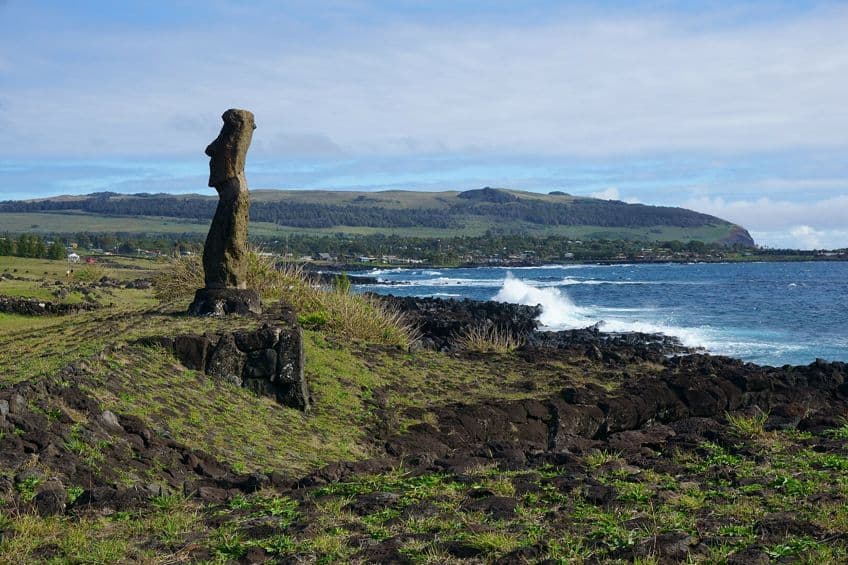
Australian Art
In Australia, there are thousands of rock art sites, which showcase the historical and figurative wonders of aboriginal art. Australian aboriginal art can be understood in three categories, which also coincide with the ecological zones of Australia. The first category is identified as the hub of Australia and its heart, which spans the most landmass. This area is an arid desert encompassed by a Savannah belt. The second category is an extension from the central desert to the southeastern coast. This zone encompasses sections of eucalyptus forest with tropical jungle belts. The third category extends to the northeast and northern coasts of Australia.
When Europeans contacted Aborigines in Australia, it is thought that their population existed at approximately 300,000 people, who were spread out across these three divisions.
Australian Aboriginal art includes rock shelters with rocks that are decorated and painted with a wealth of different art styles. Aboriginal art encompasses figurative and non-figurative art forms, as well as engravings and personal jewelry crafted from animal bones, lizard vertebrae, and teeth. Red ochre was a primary color used in Australian Aboriginal art and was discovered at Lake Mungo in New South Wales, dating to approximately 32,000 BP. While this does not demonstrate the artistic value of red ochre in Aboriginal society, it does indicate that it was used as a medium in ritual ceremonies. Paintings also utilized human blood and are dated to around 20,000 years old.
Prominent Australian Art Styles
The chronology of tracing the different rock art styles was executed using existing theories based on geological events, the presence of certain animals, the absence of certain elements, and other factors. While this process may seem complex, it has been concluded that the end of the early period in aboriginal art styles was marked by the presence of European and Indonesian motifs such as ships and other animals in art. Below, we have summarized the different styles of art found in Australia that mark the significant developments in prehistoric civilizations and Aborigine encounters with Europeans.
- The Panaramittee style is recognized as one of the oldest Aborigines styles that thrived in Central Asia, Tasmania, and southern Australia. The Panaramittee style dates to around 30,000 BP and was characterized by the use of figurative and non-figurative elements, as well as small designs with crescents, animal tracks, circles, and radiating lines.
- Finger-marked geometric designs are another famous early style, which dated to around 20,000 BP. This was commonly found in the Koonalda Cave in South Australia, which depicted areas with soft rocks engraved or finger-marked with various geometric motifs. These elaborate engravings spanned several thousand square feet and were composed of herringbone and parallel line patterns. It is believed that these markings held some level of symbolism, which is currently undetermined, however, they are still considered important since they were only marked at certain points in the cave.
- The simple figurative style can also be seen in parts of West, East, and North Australia in paintings and rock engravings, and is believed to have followed the Panaramittee style. The simple figurative style is loosely defined by the presence of silhouettes depicting animal and human forms.
- The Dynamic style is also called the Mimi style and is one of the main styles found at the Arnhem Land rock painting sites and dates to around 18,000 BP. This style is recognized by its use of linear human figures, which are adorned in ornaments and are depicted with boomerangs and spears. Occasionally, the Mimi style portrays humans with animal heads and is associated with extinct animals such as the Tasmanian wolf.
- The Estuarine style is another famous Aborigines style that reflected environmental changes in the Arnhem Land region. The Estuarine style marked the period when saltwater conditions first appeared in the region.
- The X-ray style is another important style found in the Arnhem Land region, which portrayed the internal conditions of animals in an X-ray style. While the first instances of this style can be found in Mesolithic Europe around 8000 BCE, it has also featured Aboriginal art, most notably in the eastern Arnhem Land bark paintings of northern Australia.
- The Bradshaw style reflects the painting styles from the Kimberley region. The early Bradshaw style reflects small human figures painted in red pigment and dating to before 3000 BCE.
- The Wandjina style was the success of the Bradshaw style, which derived its name from ancient ancestor spirit paintings. These paintings portrayed large white figures, which were outlined in black and portrayed with no mouths. Their circular figures were framed in red halos and remained a dominant style. The style is also recognized as the Wondjina style and reflects the spirits who created the world. The figures in these paintings are also portrayed with footprints instead of limbs as if their form and movements were summarized by early Aboriginal
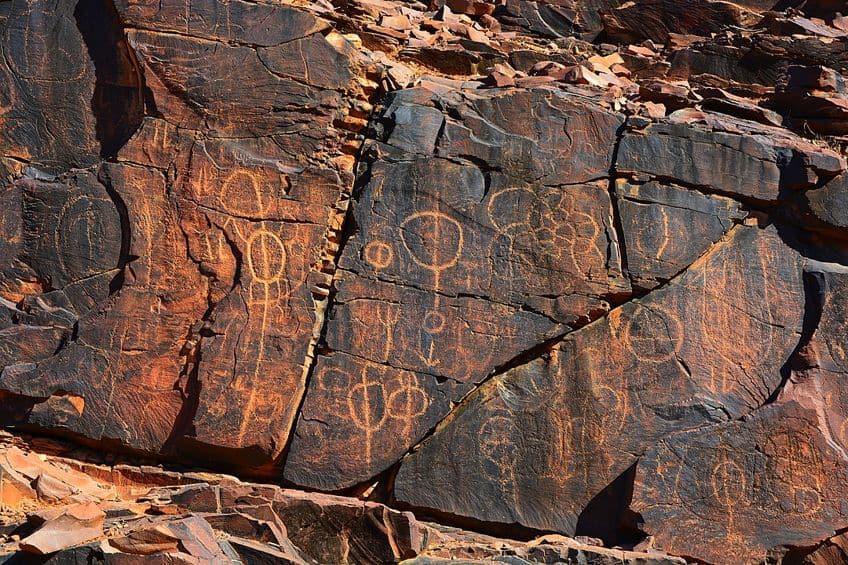
Melanesian Art
Another popular Oceanic art form was derived from Melanesia, which is composed of New Guinea and the surrounding islands. Melanesian art is understood as the most striking and enigmatic art of Oceania. While few examples of original Melanesian art exist today, it is understood that Melanesian art typically represented exaggerated forms with sexual themes and other aspects of Melanesian society, including hunting, cannibalism, and ancestor worship.
Pigments became the first form of art in Melanesian societies and were dominantly used in personal decoration across Papua New Guinea around 15,000 BCE.
Other early art forms in New Guinea included stone carving and the creation of mortars, pestles, and human figures, which were discovered in the Central Highlands. While many of the stone carvings are undated, other creations such as stone bowls were also used around 2000 BCE. Art styles found in the Sepik area have also been integrated into more recent art styles of sculpture. Petroglyphs and paintings featured in rock art were incredibly abundant in Papua New Guinea, however, many of them remain undated.
After Oceania’s encounter with European settlers, Melanesian art saw a spike in the development of art and culture after the 1600s. Most popular in Melanesian art was wood carving, however, after the 19th century, increased Westernization resulted in the decline of traditional art forms. After the Second World War, there was further cultural destruction, which resulted in the steep decline of traditional art practices. However, in the Contemporary era, many artists continue to be inspired by the original Melanesian art forms, of which few remain.
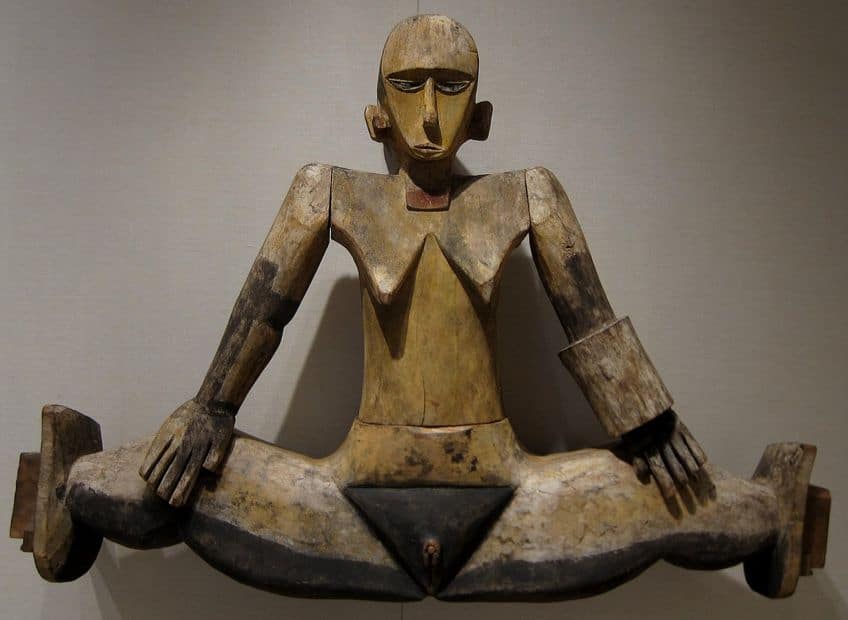
The Lapita Ceramics
Among the most important artifacts of Melanesian art are the Lapita ceramics, which flourished in New Caledonia. This is among the earliest evidence of early Western Pacific art and was characterized by the Lapita ceramic style from the Lapita culture, which flourished around 1900 BCE. This famous style was found in numerous locations across Oceania and was recognized for its profound influence across the northern coast of Papua New Guinea, as well as Fiji, Samoa, and Tonga. The Lapita culture was involved in a complex network of exchange across long distances. These exchanges included objects such as stone tools, obsidian objects, and other ceramics, which were traded between the Admiralty Islands to New Caledonia.
Lapita ceramic vessels were multifaceted and included features such as shallow and deep-set bowls, carinated vessels, and flat-bottomed dishes.
What made these ceramics so unique was their stamped decoration patterns, which made them incredibly distinct at the time, and were applied in stacked horizontal areas. The design units were crafted from right angles or simple arcs, which featured ornate interlocking patterns. A few Lapita ceramics also featured curvilinear designs, which included the earliest representations of human faces in the Pacific Islands. The earliest vessels were created with the most elaborate designs and over time, became increasingly simple towards eastern regions after 500 BCE. Lapita ceramics that were produced in Samoa, Fiji, and Tonga retained the original Lapita shapes, however, they decreased in their use of original signs.
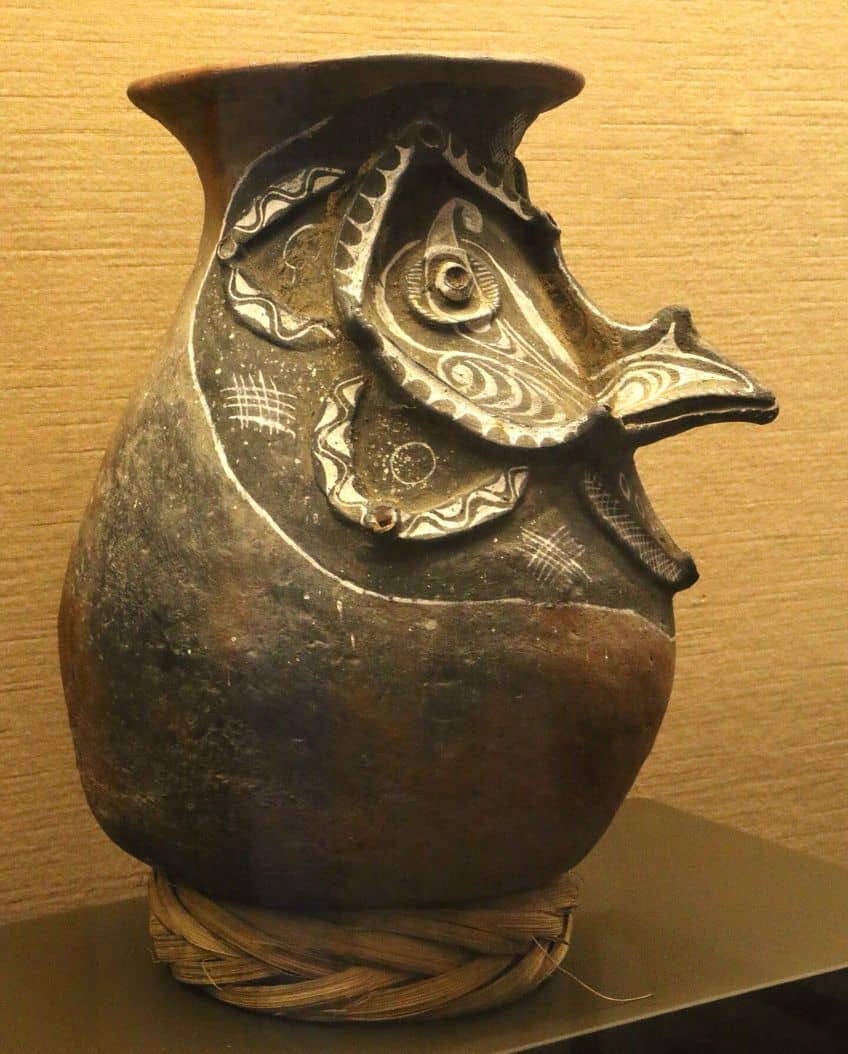
The Mangaasi Ceramics
Alongside the famous Lapita ceramics were also the Mangaasi ceramics, which dated to between 700 BCE and 1200 CE. This was another impressive style, which included decorated spherical pots with bold triangle outlines and filets. The decorations on the ceramics also included elaborate designs with incised triangles and ornate handles that were molded in the form of animal and bird shapes. Early Mangaasi styles were characterized by the use of discontinuous applied reliefs and feathered decorations, while the later styles displayed a more free application with a narrow range of designs. It was concluded that there was a devolution in the development of Mangaasi ceramic designs. These vessels were believed to be produced using a coiling method that excluded the use of an anvil or paddle.
Mangaasi pottery was thus a constant form of art in Oceania for around 2000 years until it was abandoned in dominant sites around the burial period of 1720 CE.
The Oceanian Art Market
Since the colonization of Oceania, there has been a thriving art market in the West established between the 18th and 19th centuries for explorers and traders who wished to exhibit and profit from Oceanian artifacts. In Europe, these artifacts were distributed and collected as exotic curiosities that were later purchased by museums and collectors. Many Modern artists in Paris and Berlin were also renowned collectors of such artifacts, including figures like André Derain, William Oldman, and Paul Guillaume, who viewed African and Oceanic artifacts as “aesthetic” works of art, which became recognized as Primitivism in the European art circle. In 2017, Christie’s in Paris sold many Oceanic artworks from the Vérité Collection for around $21.2 million. Another steal from the lot sold was a traditional Polynesian artifact recognized as a Hawaiian God called Ku ka ’ili moku, sculpted in the kona style (c. 1780-1820), which sold for around $7.9 million, making it the most expensive Oceanic sculpture ever sold on auction.
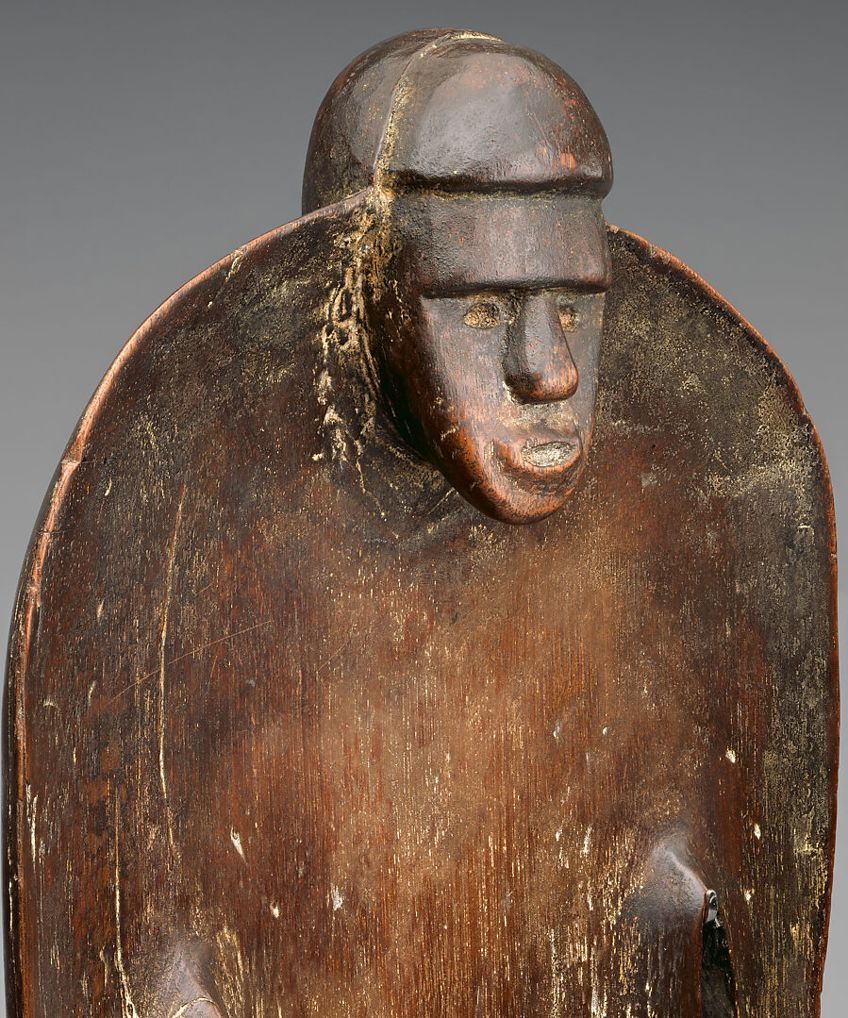
Oceanian art reflects the rich cultures of its many islands and civilizations, whose diversity and artisanal talents continue to shine through despite the impact of colonization on traditional art practices. We hope that this article has been insightful in helping you understand the different Oceanic cultures, art forms, and art styles that shape Oceanic art.
Frequently Asked Questions
What Is Oceanic Art?
The contemporary definition of Oceanic art describes all art produced by indigenous societies of Australia, the Pacific Islands, Hawaii, Easter Island, and other regions of Oceania that include visual and applied art forms. Oceanic art is a broad category for describing both prehistoric art in Oceania and art produced during and after European colonization.
What Are the Dominant Art Forms in Oceania Art?
Among the most famous art forms from Oceanian art include petroglyphs, rock art, tattooing, wood carving, painting, stone carving, sculpture, textile work, jewelry making, ceramic art, mask making, and basketry.
What Is the Most Famous Traditional Polynesian Artwork?
The Moai sculptures of Easter Island, also known as Rapa Nui, are considered to be the most famous traditional Polynesian artifacts and artworks to date. These monumental volcanic sculptures were created by the Rapa Nui people between the 13th and the 16th century to represent ancestral chiefs, who were seen as descendants of the Gods with supernatural powers that were capable of changing the world.
Liam Davis is an experienced art historian with demonstrated experience in the industry. After graduating from the Academy of Art History with a bachelor’s degree, Liam worked for many years as a copywriter for various art magazines and online art galleries. He also worked as an art curator for an art gallery in Illinois before working now as editor-in-chief for artfilemagazine.com. Liam’s passion is, aside from sculptures from the Roman and Greek periods, cave paintings, and neolithic art.
Learn more about Liam Davis and about us.
Cite this Article
Liam, Davis, “Oceanic Art – Exploring Traditional Polynesian Culture.” artfilemagazine – Your Online Art Source. September 4, 2023. URL: https://artfilemagazine.com/oceanic-art/
Davis, L. (2023, 4 September). Oceanic Art – Exploring Traditional Polynesian Culture. artfilemagazine – Your Online Art Source. https://artfilemagazine.com/oceanic-art/
Davis, Liam. “Oceanic Art – Exploring Traditional Polynesian Culture.” artfilemagazine – Your Online Art Source, September 4, 2023. https://artfilemagazine.com/oceanic-art/.


